 https://treasuryxl.com/wp-content/uploads/2025/10/Kurt-Expert-featured.png
200
200
treasuryXL
https://treasuryxl.com/wp-content/uploads/2018/07/treasuryXL-logo-300x56.png
treasuryXL2025-11-25 07:00:152025-11-24 15:35:04How to Create Lasting Enterprise Value
https://treasuryxl.com/wp-content/uploads/2025/10/Kurt-Expert-featured.png
200
200
treasuryXL
https://treasuryxl.com/wp-content/uploads/2018/07/treasuryXL-logo-300x56.png
treasuryXL2025-11-25 07:00:152025-11-24 15:35:04How to Create Lasting Enterprise ValueA credit risk is the risk of default on a debt that may arise from a borrower failing to make required payments. In the first resort, the risk is that of the lender and includes lost principal and interest, disruption to cash flows, and increased collection costs.
There are several ways to manage this risk. Sometimes, companies assess the creditworthiness of customers in advance, in order to avoid non-payment. Companies also commonly purchase credit insurance, where the insurer pays if the customer does not. Sometimes, companies simply ask the customer to pay in advance, which is known as “prepayment”. When large amounts of goods are traded directly between two parties, credit risk is always an issue. There is an entire field of banking, called Trade Finance, which is designed to mitigate this risk. Most commonly, banks issue a letter for credit, which is a form of assurance to the seller that the buyer possesses the funds needed to purchase the goods. In addition, banks may also offer payment guarantees.
Click and Scroll! Here are more articles that you might like…
 https://treasuryxl.com/wp-content/uploads/2025/10/Kurt-Expert-featured.png
200
200
treasuryXL
https://treasuryxl.com/wp-content/uploads/2018/07/treasuryXL-logo-300x56.png
treasuryXL2025-11-25 07:00:152025-11-24 15:35:04How to Create Lasting Enterprise Value
https://treasuryxl.com/wp-content/uploads/2025/10/Kurt-Expert-featured.png
200
200
treasuryXL
https://treasuryxl.com/wp-content/uploads/2018/07/treasuryXL-logo-300x56.png
treasuryXL2025-11-25 07:00:152025-11-24 15:35:04How to Create Lasting Enterprise Value https://treasuryxl.com/wp-content/uploads/2025/10/Kurt-Expert-featured.png
200
200
treasuryXL
https://treasuryxl.com/wp-content/uploads/2018/07/treasuryXL-logo-300x56.png
treasuryXL2025-10-15 08:54:042025-11-12 15:40:00Artificial Intelligence, IQ & Due Diligence
https://treasuryxl.com/wp-content/uploads/2025/10/Kurt-Expert-featured.png
200
200
treasuryXL
https://treasuryxl.com/wp-content/uploads/2018/07/treasuryXL-logo-300x56.png
treasuryXL2025-10-15 08:54:042025-11-12 15:40:00Artificial Intelligence, IQ & Due Diligence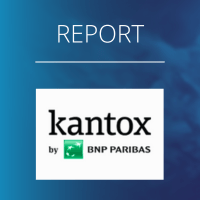 https://treasuryxl.com/wp-content/uploads/2025/02/KantoxBLOGS-featured-3.png
200
200
treasuryXL
https://treasuryxl.com/wp-content/uploads/2018/07/treasuryXL-logo-300x56.png
treasuryXL2025-10-01 07:00:582025-09-30 21:15:01Guide to Protecting the Budget FX Rate
https://treasuryxl.com/wp-content/uploads/2025/02/KantoxBLOGS-featured-3.png
200
200
treasuryXL
https://treasuryxl.com/wp-content/uploads/2018/07/treasuryXL-logo-300x56.png
treasuryXL2025-10-01 07:00:582025-09-30 21:15:01Guide to Protecting the Budget FX Rate https://treasuryxl.com/wp-content/uploads/2025/09/Harry_BLOGS-Expert-featured-3.png
200
200
treasuryXL
https://treasuryxl.com/wp-content/uploads/2018/07/treasuryXL-logo-300x56.png
treasuryXL2025-09-03 07:00:572025-09-25 09:23:15TARFs: Currency Roulette or Tactical Advantage?
https://treasuryxl.com/wp-content/uploads/2025/09/Harry_BLOGS-Expert-featured-3.png
200
200
treasuryXL
https://treasuryxl.com/wp-content/uploads/2018/07/treasuryXL-logo-300x56.png
treasuryXL2025-09-03 07:00:572025-09-25 09:23:15TARFs: Currency Roulette or Tactical Advantage? https://treasuryxl.com/wp-content/uploads/2025/06/KantoxBLOGS-featured-9.png
200
200
treasuryXL
https://treasuryxl.com/wp-content/uploads/2018/07/treasuryXL-logo-300x56.png
treasuryXL2025-08-14 08:43:552025-08-14 14:07:04How Clickio got their currency exposure under control with Kantox
https://treasuryxl.com/wp-content/uploads/2025/06/KantoxBLOGS-featured-9.png
200
200
treasuryXL
https://treasuryxl.com/wp-content/uploads/2018/07/treasuryXL-logo-300x56.png
treasuryXL2025-08-14 08:43:552025-08-14 14:07:04How Clickio got their currency exposure under control with Kantox https://treasuryxl.com/wp-content/uploads/2025/02/KantoxBLOGS-featured-3.png
200
200
treasuryXL
https://treasuryxl.com/wp-content/uploads/2018/07/treasuryXL-logo-300x56.png
treasuryXL2025-07-02 07:00:212025-06-30 16:36:19Removing FX Gains & Losses: Balance Sheet Hedging Redefined
https://treasuryxl.com/wp-content/uploads/2025/02/KantoxBLOGS-featured-3.png
200
200
treasuryXL
https://treasuryxl.com/wp-content/uploads/2018/07/treasuryXL-logo-300x56.png
treasuryXL2025-07-02 07:00:212025-06-30 16:36:19Removing FX Gains & Losses: Balance Sheet Hedging Redefined https://treasuryxl.com/wp-content/uploads/2025/06/KantoxBLOGS-featured-9.png
200
200
treasuryXL
https://treasuryxl.com/wp-content/uploads/2018/07/treasuryXL-logo-300x56.png
treasuryXL2025-06-19 10:00:062025-06-17 12:54:15How Evaneos Protects Margins from FX Risk While Paying Suppliers in their Local Currencies
https://treasuryxl.com/wp-content/uploads/2025/06/KantoxBLOGS-featured-9.png
200
200
treasuryXL
https://treasuryxl.com/wp-content/uploads/2018/07/treasuryXL-logo-300x56.png
treasuryXL2025-06-19 10:00:062025-06-17 12:54:15How Evaneos Protects Margins from FX Risk While Paying Suppliers in their Local Currencies https://treasuryxl.com/wp-content/uploads/2025/06/TreasurySpring-van-Template-1.png
200
200
treasuryXL
https://treasuryxl.com/wp-content/uploads/2018/07/treasuryXL-logo-300x56.png
treasuryXL2025-06-12 09:32:592025-06-12 09:44:54Creducation – Understanding credit risk in cash management
https://treasuryxl.com/wp-content/uploads/2025/06/TreasurySpring-van-Template-1.png
200
200
treasuryXL
https://treasuryxl.com/wp-content/uploads/2018/07/treasuryXL-logo-300x56.png
treasuryXL2025-06-12 09:32:592025-06-12 09:44:54Creducation – Understanding credit risk in cash management https://treasuryxl.com/wp-content/uploads/2025/05/Francois-Template_BLOGS-Expert-featured-7.png
200
200
treasuryXL
https://treasuryxl.com/wp-content/uploads/2018/07/treasuryXL-logo-300x56.png
treasuryXL2025-05-15 07:00:252025-05-06 14:23:53Treasury Management and Credit Collections
https://treasuryxl.com/wp-content/uploads/2025/05/Francois-Template_BLOGS-Expert-featured-7.png
200
200
treasuryXL
https://treasuryxl.com/wp-content/uploads/2018/07/treasuryXL-logo-300x56.png
treasuryXL2025-05-15 07:00:252025-05-06 14:23:53Treasury Management and Credit Collections https://treasuryxl.com/wp-content/uploads/2025/05/Live-Session-TreasurySpring-200-3.png
200
200
treasuryXL
https://treasuryxl.com/wp-content/uploads/2018/07/treasuryXL-logo-300x56.png
treasuryXL2025-05-12 07:00:542025-05-08 14:57:36Recap & Recording: How To Find High Ground When The Waters Are Rising
https://treasuryxl.com/wp-content/uploads/2025/05/Live-Session-TreasurySpring-200-3.png
200
200
treasuryXL
https://treasuryxl.com/wp-content/uploads/2018/07/treasuryXL-logo-300x56.png
treasuryXL2025-05-12 07:00:542025-05-08 14:57:36Recap & Recording: How To Find High Ground When The Waters Are Rising https://treasuryxl.com/wp-content/uploads/2025/05/money-2020-200.png
200
200
treasuryXL
https://treasuryxl.com/wp-content/uploads/2018/07/treasuryXL-logo-300x56.png
treasuryXL2025-05-06 07:00:252025-05-06 15:54:38Money20/20 Amsterdam is waiting for you
https://treasuryxl.com/wp-content/uploads/2025/05/money-2020-200.png
200
200
treasuryXL
https://treasuryxl.com/wp-content/uploads/2018/07/treasuryXL-logo-300x56.png
treasuryXL2025-05-06 07:00:252025-05-06 15:54:38Money20/20 Amsterdam is waiting for you https://treasuryxl.com/wp-content/uploads/2025/04/Live-Session-TreasurySpring-200-2.png
200
200
treasuryXL
https://treasuryxl.com/wp-content/uploads/2018/07/treasuryXL-logo-300x56.png
treasuryXL2025-04-30 13:08:112025-05-07 16:16:43Live Session: How To Find High Ground When The Waters Are Rising
https://treasuryxl.com/wp-content/uploads/2025/04/Live-Session-TreasurySpring-200-2.png
200
200
treasuryXL
https://treasuryxl.com/wp-content/uploads/2018/07/treasuryXL-logo-300x56.png
treasuryXL2025-04-30 13:08:112025-05-07 16:16:43Live Session: How To Find High Ground When The Waters Are Rising https://treasuryxl.com/wp-content/uploads/2025/02/KantoxBLOGS-featured-3.png
200
200
treasuryXL
https://treasuryxl.com/wp-content/uploads/2018/07/treasuryXL-logo-300x56.png
treasuryXL2025-04-30 07:00:482025-04-29 14:42:21Optimising Cash & FX Risk Management
https://treasuryxl.com/wp-content/uploads/2025/02/KantoxBLOGS-featured-3.png
200
200
treasuryXL
https://treasuryxl.com/wp-content/uploads/2018/07/treasuryXL-logo-300x56.png
treasuryXL2025-04-30 07:00:482025-04-29 14:42:21Optimising Cash & FX Risk Management https://treasuryxl.com/wp-content/uploads/2025/04/Harry_BLOGS-Expert-featured-2.png
200
200
treasuryXL
https://treasuryxl.com/wp-content/uploads/2018/07/treasuryXL-logo-300x56.png
treasuryXL2025-04-14 07:00:562025-04-14 10:57:43What If You Just Hedge 50%?
https://treasuryxl.com/wp-content/uploads/2025/04/Harry_BLOGS-Expert-featured-2.png
200
200
treasuryXL
https://treasuryxl.com/wp-content/uploads/2018/07/treasuryXL-logo-300x56.png
treasuryXL2025-04-14 07:00:562025-04-14 10:57:43What If You Just Hedge 50%? https://treasuryxl.com/wp-content/uploads/2025/04/KantoxBLOGS-featured-8.png
200
200
treasuryXL
https://treasuryxl.com/wp-content/uploads/2018/07/treasuryXL-logo-300x56.png
treasuryXL2025-04-02 07:00:242025-04-01 12:59:46CurrencyCast: Cash is King: The FX Risk Perspective
https://treasuryxl.com/wp-content/uploads/2025/04/KantoxBLOGS-featured-8.png
200
200
treasuryXL
https://treasuryxl.com/wp-content/uploads/2018/07/treasuryXL-logo-300x56.png
treasuryXL2025-04-02 07:00:242025-04-01 12:59:46CurrencyCast: Cash is King: The FX Risk Perspective https://treasuryxl.com/wp-content/uploads/2025/02/Ebury-BLOGS-featured-5.png
200
200
treasuryXL
https://treasuryxl.com/wp-content/uploads/2018/07/treasuryXL-logo-300x56.png
treasuryXL2025-03-31 07:00:132025-03-27 11:11:22A comprehensive guide to different hedging programs
https://treasuryxl.com/wp-content/uploads/2025/02/Ebury-BLOGS-featured-5.png
200
200
treasuryXL
https://treasuryxl.com/wp-content/uploads/2018/07/treasuryXL-logo-300x56.png
treasuryXL2025-03-31 07:00:132025-03-27 11:11:22A comprehensive guide to different hedging programs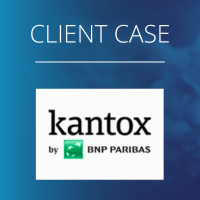 https://treasuryxl.com/wp-content/uploads/2025/03/KantoxBLOGS-featured-5.png
200
200
treasuryXL
https://treasuryxl.com/wp-content/uploads/2018/07/treasuryXL-logo-300x56.png
treasuryXL2025-03-17 07:00:402025-03-14 00:44:05How Profine achieved real-time FX risk management with Kantox
https://treasuryxl.com/wp-content/uploads/2025/03/KantoxBLOGS-featured-5.png
200
200
treasuryXL
https://treasuryxl.com/wp-content/uploads/2018/07/treasuryXL-logo-300x56.png
treasuryXL2025-03-17 07:00:402025-03-14 00:44:05How Profine achieved real-time FX risk management with Kantox https://treasuryxl.com/wp-content/uploads/2024/02/Francois-Template_BLOGS-Expert-featured-5.png
200
200
treasuryXL
https://treasuryxl.com/wp-content/uploads/2018/07/treasuryXL-logo-300x56.png
treasuryXL2025-03-13 09:15:452025-03-13 11:02:14New E-payment Methods & Emerging Trends in Treasury Innovation and Fintech Solutions
https://treasuryxl.com/wp-content/uploads/2024/02/Francois-Template_BLOGS-Expert-featured-5.png
200
200
treasuryXL
https://treasuryxl.com/wp-content/uploads/2018/07/treasuryXL-logo-300x56.png
treasuryXL2025-03-13 09:15:452025-03-13 11:02:14New E-payment Methods & Emerging Trends in Treasury Innovation and Fintech Solutions https://treasuryxl.com/wp-content/uploads/2025/01/Ebury-BLOGS-featured-4.png
200
200
treasuryXL
https://treasuryxl.com/wp-content/uploads/2018/07/treasuryXL-logo-300x56.png
treasuryXL2025-03-11 07:00:252025-03-10 15:14:51Debunking the top 5 misconceptions about currency hedging
https://treasuryxl.com/wp-content/uploads/2025/01/Ebury-BLOGS-featured-4.png
200
200
treasuryXL
https://treasuryxl.com/wp-content/uploads/2018/07/treasuryXL-logo-300x56.png
treasuryXL2025-03-11 07:00:252025-03-10 15:14:51Debunking the top 5 misconceptions about currency hedging https://treasuryxl.com/wp-content/uploads/2025/02/Ebury-BLOGS-featured-5.png
200
200
treasuryXL
https://treasuryxl.com/wp-content/uploads/2018/07/treasuryXL-logo-300x56.png
treasuryXL2025-02-22 07:00:422025-02-21 09:35:11Everything you need to know to set a budget rate in 2025
https://treasuryxl.com/wp-content/uploads/2025/02/Ebury-BLOGS-featured-5.png
200
200
treasuryXL
https://treasuryxl.com/wp-content/uploads/2018/07/treasuryXL-logo-300x56.png
treasuryXL2025-02-22 07:00:422025-02-21 09:35:11Everything you need to know to set a budget rate in 2025 https://treasuryxl.com/wp-content/uploads/2024/02/Francois-Template_BLOGS-Expert-featured-5.png
200
200
treasuryXL
https://treasuryxl.com/wp-content/uploads/2018/07/treasuryXL-logo-300x56.png
treasuryXL2025-02-19 07:00:592025-02-19 09:03:33Training: PSD2 & 3 and the PSR: impact on open banking and the financial ecosystem
https://treasuryxl.com/wp-content/uploads/2024/02/Francois-Template_BLOGS-Expert-featured-5.png
200
200
treasuryXL
https://treasuryxl.com/wp-content/uploads/2018/07/treasuryXL-logo-300x56.png
treasuryXL2025-02-19 07:00:592025-02-19 09:03:33Training: PSD2 & 3 and the PSR: impact on open banking and the financial ecosystem https://treasuryxl.com/wp-content/uploads/2025/02/KantoxBLOGS-featured-3.png
200
200
treasuryXL
https://treasuryxl.com/wp-content/uploads/2018/07/treasuryXL-logo-300x56.png
treasuryXL2025-02-17 07:00:562025-03-10 15:33:05Protecting Profit Margins from Currency Fluctuations
https://treasuryxl.com/wp-content/uploads/2025/02/KantoxBLOGS-featured-3.png
200
200
treasuryXL
https://treasuryxl.com/wp-content/uploads/2018/07/treasuryXL-logo-300x56.png
treasuryXL2025-02-17 07:00:562025-03-10 15:33:05Protecting Profit Margins from Currency Fluctuations https://treasuryxl.com/wp-content/uploads/2025/01/Ebury-BLOGS-featured-4.png
200
200
treasuryXL
https://treasuryxl.com/wp-content/uploads/2018/07/treasuryXL-logo-300x56.png
treasuryXL2025-01-28 07:00:562025-03-10 15:14:19Money at rest, money in motion & money at risk
https://treasuryxl.com/wp-content/uploads/2025/01/Ebury-BLOGS-featured-4.png
200
200
treasuryXL
https://treasuryxl.com/wp-content/uploads/2018/07/treasuryXL-logo-300x56.png
treasuryXL2025-01-28 07:00:562025-03-10 15:14:19Money at rest, money in motion & money at risk https://treasuryxl.com/wp-content/uploads/2025/01/LIVE-SESSION-Kantox-Recap.png
200
200
treasuryXL
https://treasuryxl.com/wp-content/uploads/2018/07/treasuryXL-logo-300x56.png
treasuryXL2025-01-24 10:04:242025-01-24 10:05:11Recap & Recording: Your Currency Management Toolkit for 2025
https://treasuryxl.com/wp-content/uploads/2025/01/LIVE-SESSION-Kantox-Recap.png
200
200
treasuryXL
https://treasuryxl.com/wp-content/uploads/2018/07/treasuryXL-logo-300x56.png
treasuryXL2025-01-24 10:04:242025-01-24 10:05:11Recap & Recording: Your Currency Management Toolkit for 2025 https://treasuryxl.com/wp-content/uploads/2025/01/LIVE-SESSION-Kantox-1.png
200
200
treasuryXL
https://treasuryxl.com/wp-content/uploads/2018/07/treasuryXL-logo-300x56.png
treasuryXL2025-01-15 10:00:472025-01-15 13:17:15Live Session: Your Currency Management Toolkit for 2025
https://treasuryxl.com/wp-content/uploads/2025/01/LIVE-SESSION-Kantox-1.png
200
200
treasuryXL
https://treasuryxl.com/wp-content/uploads/2018/07/treasuryXL-logo-300x56.png
treasuryXL2025-01-15 10:00:472025-01-15 13:17:15Live Session: Your Currency Management Toolkit for 2025 https://treasuryxl.com/wp-content/uploads/2025/01/Ebury-BLOGS-featured-3.png
200
200
treasuryXL
https://treasuryxl.com/wp-content/uploads/2018/07/treasuryXL-logo-300x56.png
treasuryXL2025-01-13 07:00:552025-01-13 10:19:04The biggest unknown quantity around Trump is tariffs, says Matthew Ryan
https://treasuryxl.com/wp-content/uploads/2025/01/Ebury-BLOGS-featured-3.png
200
200
treasuryXL
https://treasuryxl.com/wp-content/uploads/2018/07/treasuryXL-logo-300x56.png
treasuryXL2025-01-13 07:00:552025-01-13 10:19:04The biggest unknown quantity around Trump is tariffs, says Matthew Ryan https://treasuryxl.com/wp-content/uploads/2024/01/Harry_BLOGS-Expert-featured.png
200
200
treasuryXL
https://treasuryxl.com/wp-content/uploads/2018/07/treasuryXL-logo-300x56.png
treasuryXL2024-12-23 07:00:592024-12-20 08:19:13What is an FX Budget Rate?
https://treasuryxl.com/wp-content/uploads/2024/01/Harry_BLOGS-Expert-featured.png
200
200
treasuryXL
https://treasuryxl.com/wp-content/uploads/2018/07/treasuryXL-logo-300x56.png
treasuryXL2024-12-23 07:00:592024-12-20 08:19:13What is an FX Budget Rate? https://treasuryxl.com/wp-content/uploads/2024/01/Harry_BLOGS-Expert-featured.png
200
200
treasuryXL
https://treasuryxl.com/wp-content/uploads/2018/07/treasuryXL-logo-300x56.png
treasuryXL2024-11-19 07:00:072024-11-18 09:12:56Forward + Spot Strategy: Pros and Cons
https://treasuryxl.com/wp-content/uploads/2024/01/Harry_BLOGS-Expert-featured.png
200
200
treasuryXL
https://treasuryxl.com/wp-content/uploads/2018/07/treasuryXL-logo-300x56.png
treasuryXL2024-11-19 07:00:072024-11-18 09:12:56Forward + Spot Strategy: Pros and Cons https://treasuryxl.com/wp-content/uploads/2024/07/Ebury-BLOGS-featured-2.png
200
200
treasuryXL
https://treasuryxl.com/wp-content/uploads/2018/07/treasuryXL-logo-300x56.png
treasuryXL2024-07-30 07:00:072024-08-01 09:24:26Want to increase the effectiveness of your hedging strategy and maximise profitability?
https://treasuryxl.com/wp-content/uploads/2024/07/Ebury-BLOGS-featured-2.png
200
200
treasuryXL
https://treasuryxl.com/wp-content/uploads/2018/07/treasuryXL-logo-300x56.png
treasuryXL2024-07-30 07:00:072024-08-01 09:24:26Want to increase the effectiveness of your hedging strategy and maximise profitability? https://treasuryxl.com/wp-content/uploads/2024/07/Currencycast-KantoxBLOGS-featured-3.png
200
200
treasuryXL
https://treasuryxl.com/wp-content/uploads/2018/07/treasuryXL-logo-300x56.png
treasuryXL2024-07-10 07:00:572024-07-12 16:09:00CurrencyCast: FX Lessons from Merck & Hermès: How Finance Teams Fuel Success
https://treasuryxl.com/wp-content/uploads/2024/07/Currencycast-KantoxBLOGS-featured-3.png
200
200
treasuryXL
https://treasuryxl.com/wp-content/uploads/2018/07/treasuryXL-logo-300x56.png
treasuryXL2024-07-10 07:00:572024-07-12 16:09:00CurrencyCast: FX Lessons from Merck & Hermès: How Finance Teams Fuel Success https://treasuryxl.com/wp-content/uploads/2024/06/Currencycast-KantoxBLOGS-featured-2.png
200
200
treasuryXL
https://treasuryxl.com/wp-content/uploads/2018/07/treasuryXL-logo-300x56.png
treasuryXL2024-06-26 07:00:162024-06-26 11:57:43CurrencyCast: The Future of the Payments Landscape
https://treasuryxl.com/wp-content/uploads/2024/06/Currencycast-KantoxBLOGS-featured-2.png
200
200
treasuryXL
https://treasuryxl.com/wp-content/uploads/2018/07/treasuryXL-logo-300x56.png
treasuryXL2024-06-26 07:00:162024-06-26 11:57:43CurrencyCast: The Future of the Payments Landscape https://treasuryxl.com/wp-content/uploads/2024/06/Currencycast-KantoxBLOGS-featured-1.png
200
200
treasuryXL
https://treasuryxl.com/wp-content/uploads/2018/07/treasuryXL-logo-300x56.png
treasuryXL2024-06-12 07:00:582024-08-19 09:01:35CurrencyCast: Treasury Management During Volatile Times in the Asia/Pacific Region with Damian Glendinning
https://treasuryxl.com/wp-content/uploads/2024/06/Currencycast-KantoxBLOGS-featured-1.png
200
200
treasuryXL
https://treasuryxl.com/wp-content/uploads/2018/07/treasuryXL-logo-300x56.png
treasuryXL2024-06-12 07:00:582024-08-19 09:01:35CurrencyCast: Treasury Management During Volatile Times in the Asia/Pacific Region with Damian Glendinning https://treasuryxl.com/wp-content/uploads/2024/04/Harry_BLOGS-Expert-featured-1.png
200
200
treasuryXL
https://treasuryxl.com/wp-content/uploads/2018/07/treasuryXL-logo-300x56.png
treasuryXL2024-06-06 07:00:342024-07-23 10:43:22Avoiding the Pitfalls of Over-Hedging in FX Trading
https://treasuryxl.com/wp-content/uploads/2024/04/Harry_BLOGS-Expert-featured-1.png
200
200
treasuryXL
https://treasuryxl.com/wp-content/uploads/2018/07/treasuryXL-logo-300x56.png
treasuryXL2024-06-06 07:00:342024-07-23 10:43:22Avoiding the Pitfalls of Over-Hedging in FX Trading https://treasuryxl.com/wp-content/uploads/2024/05/Kopie-van-Currencycast-KantoxBLOGS-featured-1.png
200
200
treasuryXL
https://treasuryxl.com/wp-content/uploads/2018/07/treasuryXL-logo-300x56.png
treasuryXL2024-05-29 07:00:222024-08-19 09:01:32CurrencyCast: How to manage emerging market currencies with Danilo Gonzalez
https://treasuryxl.com/wp-content/uploads/2024/05/Kopie-van-Currencycast-KantoxBLOGS-featured-1.png
200
200
treasuryXL
https://treasuryxl.com/wp-content/uploads/2018/07/treasuryXL-logo-300x56.png
treasuryXL2024-05-29 07:00:222024-08-19 09:01:32CurrencyCast: How to manage emerging market currencies with Danilo Gonzalez https://treasuryxl.com/wp-content/uploads/2024/03/Maarten-BLOGS-Expert-featured.png
200
200
treasuryXL
https://treasuryxl.com/wp-content/uploads/2018/07/treasuryXL-logo-300x56.png
treasuryXL2024-05-27 07:00:532024-06-18 11:21:07In House Financing vs Bank Financing
https://treasuryxl.com/wp-content/uploads/2024/03/Maarten-BLOGS-Expert-featured.png
200
200
treasuryXL
https://treasuryxl.com/wp-content/uploads/2018/07/treasuryXL-logo-300x56.png
treasuryXL2024-05-27 07:00:532024-06-18 11:21:07In House Financing vs Bank Financing https://treasuryxl.com/wp-content/uploads/2024/05/Kopie-van-Currencycast-KantoxBLOGS-featured.png
200
200
treasuryXL
https://treasuryxl.com/wp-content/uploads/2018/07/treasuryXL-logo-300x56.png
treasuryXL2024-05-15 07:00:302024-08-19 09:01:24CurrencyCast: Why FX Risk Management Matters in B2B Payments
https://treasuryxl.com/wp-content/uploads/2024/05/Kopie-van-Currencycast-KantoxBLOGS-featured.png
200
200
treasuryXL
https://treasuryxl.com/wp-content/uploads/2018/07/treasuryXL-logo-300x56.png
treasuryXL2024-05-15 07:00:302024-08-19 09:01:24CurrencyCast: Why FX Risk Management Matters in B2B Payments https://treasuryxl.com/wp-content/uploads/2024/05/Events-featured_MONEY-2020.png
200
200
treasuryXL
https://treasuryxl.com/wp-content/uploads/2018/07/treasuryXL-logo-300x56.png
treasuryXL2024-05-14 09:51:092024-05-14 09:54:26Money20/20 Amsterdam is waiting for you
https://treasuryxl.com/wp-content/uploads/2024/05/Events-featured_MONEY-2020.png
200
200
treasuryXL
https://treasuryxl.com/wp-content/uploads/2018/07/treasuryXL-logo-300x56.png
treasuryXL2024-05-14 09:51:092024-05-14 09:54:26Money20/20 Amsterdam is waiting for you https://treasuryxl.com/wp-content/uploads/2024/04/Kopie-van-Maarten-BLOGS-Expert-featured.png
200
200
treasuryXL
https://treasuryxl.com/wp-content/uploads/2018/07/treasuryXL-logo-300x56.png
treasuryXL2024-05-02 07:00:512024-06-18 11:22:14What does In-House Banking mean, and what are the Benefits for Treasury?
https://treasuryxl.com/wp-content/uploads/2024/04/Kopie-van-Maarten-BLOGS-Expert-featured.png
200
200
treasuryXL
https://treasuryxl.com/wp-content/uploads/2018/07/treasuryXL-logo-300x56.png
treasuryXL2024-05-02 07:00:512024-06-18 11:22:14What does In-House Banking mean, and what are the Benefits for Treasury? https://treasuryxl.com/wp-content/uploads/2024/05/Currencycast-KantoxBLOGS-featured.png
200
200
treasuryXL
https://treasuryxl.com/wp-content/uploads/2018/07/treasuryXL-logo-300x56.png
treasuryXL2024-05-01 09:25:242024-05-01 09:25:24CurrencyCast: What Are The Key Skills Of The Strategic Treasurer with Pieter de Kiewit
https://treasuryxl.com/wp-content/uploads/2024/05/Currencycast-KantoxBLOGS-featured.png
200
200
treasuryXL
https://treasuryxl.com/wp-content/uploads/2018/07/treasuryXL-logo-300x56.png
treasuryXL2024-05-01 09:25:242024-05-01 09:25:24CurrencyCast: What Are The Key Skills Of The Strategic Treasurer with Pieter de Kiewit https://treasuryxl.com/wp-content/uploads/2024/03/Maarten-BLOGS-Expert-featured.png
200
200
treasuryXL
https://treasuryxl.com/wp-content/uploads/2018/07/treasuryXL-logo-300x56.png
treasuryXL2024-03-28 07:00:332024-03-26 08:05:47Legal Aspects In-House Bank
https://treasuryxl.com/wp-content/uploads/2024/03/Maarten-BLOGS-Expert-featured.png
200
200
treasuryXL
https://treasuryxl.com/wp-content/uploads/2018/07/treasuryXL-logo-300x56.png
treasuryXL2024-03-28 07:00:332024-03-26 08:05:47Legal Aspects In-House Bank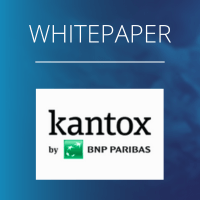 https://treasuryxl.com/wp-content/uploads/2024/03/KantoxBLOGS-featured-2.png
200
200
treasuryXL
https://treasuryxl.com/wp-content/uploads/2018/07/treasuryXL-logo-300x56.png
treasuryXL2024-03-25 07:00:412024-03-19 10:58:24Currency Management priorities for 2024: Centralixe FX & Integrate FX into Liquidity Management
https://treasuryxl.com/wp-content/uploads/2024/03/KantoxBLOGS-featured-2.png
200
200
treasuryXL
https://treasuryxl.com/wp-content/uploads/2018/07/treasuryXL-logo-300x56.png
treasuryXL2024-03-25 07:00:412024-03-19 10:58:24Currency Management priorities for 2024: Centralixe FX & Integrate FX into Liquidity Management https://treasuryxl.com/wp-content/uploads/2024/02/Kopie-van-KantoxBLOGS-featured.png
200
200
treasuryXL
https://treasuryxl.com/wp-content/uploads/2018/07/treasuryXL-logo-300x56.png
treasuryXL2024-03-06 07:00:342024-03-06 11:29:58From chaos to control: a roadmap to achieving group-wide FX centralisation
https://treasuryxl.com/wp-content/uploads/2024/02/Kopie-van-KantoxBLOGS-featured.png
200
200
treasuryXL
https://treasuryxl.com/wp-content/uploads/2018/07/treasuryXL-logo-300x56.png
treasuryXL2024-03-06 07:00:342024-03-06 11:29:58From chaos to control: a roadmap to achieving group-wide FX centralisation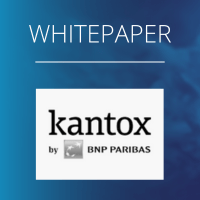 https://treasuryxl.com/wp-content/uploads/2024/02/KantoxBLOGS-featured-1.png
200
200
treasuryXL
https://treasuryxl.com/wp-content/uploads/2018/07/treasuryXL-logo-300x56.png
treasuryXL2024-02-22 07:00:172024-02-20 16:27:23Currency Management priorities for 2024: Optimize forward points & optimise exposure netting
https://treasuryxl.com/wp-content/uploads/2024/02/KantoxBLOGS-featured-1.png
200
200
treasuryXL
https://treasuryxl.com/wp-content/uploads/2018/07/treasuryXL-logo-300x56.png
treasuryXL2024-02-22 07:00:172024-02-20 16:27:23Currency Management priorities for 2024: Optimize forward points & optimise exposure netting https://treasuryxl.com/wp-content/uploads/2024/02/Ebury-BLOGS-featured-1.png
200
200
treasuryXL
https://treasuryxl.com/wp-content/uploads/2018/07/treasuryXL-logo-300x56.png
treasuryXL2024-02-12 07:00:542024-06-06 09:36:31Manage Your Currency Exposure like a Pro
https://treasuryxl.com/wp-content/uploads/2024/02/Ebury-BLOGS-featured-1.png
200
200
treasuryXL
https://treasuryxl.com/wp-content/uploads/2018/07/treasuryXL-logo-300x56.png
treasuryXL2024-02-12 07:00:542024-06-06 09:36:31Manage Your Currency Exposure like a Pro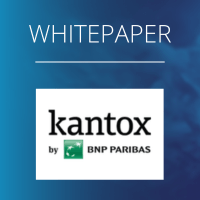 https://treasuryxl.com/wp-content/uploads/2024/01/KantoxBLOGS-featured.png
200
200
treasuryXL
https://treasuryxl.com/wp-content/uploads/2018/07/treasuryXL-logo-300x56.png
treasuryXL2024-02-08 07:00:182024-02-08 09:42:40Currency Management priorities for 2024
https://treasuryxl.com/wp-content/uploads/2024/01/KantoxBLOGS-featured.png
200
200
treasuryXL
https://treasuryxl.com/wp-content/uploads/2018/07/treasuryXL-logo-300x56.png
treasuryXL2024-02-08 07:00:182024-02-08 09:42:40Currency Management priorities for 2024 https://treasuryxl.com/wp-content/uploads/2024/01/FDW-van-Template_BLOGS-featured.png
200
200
treasuryXL
https://treasuryxl.com/wp-content/uploads/2018/07/treasuryXL-logo-300x56.png
treasuryXL2024-01-31 12:00:102024-01-31 12:03:23Become an expert in International Treasury Management and Corporate Finance!
https://treasuryxl.com/wp-content/uploads/2024/01/FDW-van-Template_BLOGS-featured.png
200
200
treasuryXL
https://treasuryxl.com/wp-content/uploads/2018/07/treasuryXL-logo-300x56.png
treasuryXL2024-01-31 12:00:102024-01-31 12:03:23Become an expert in International Treasury Management and Corporate Finance! https://treasuryxl.com/wp-content/uploads/2024/01/Francois-Template_BLOGS-Expert-featured.png
200
200
treasuryXL
https://treasuryxl.com/wp-content/uploads/2018/07/treasuryXL-logo-300x56.png
treasuryXL2024-01-25 07:00:042024-01-22 15:09:34Credit Ratings: Overview and Implications
https://treasuryxl.com/wp-content/uploads/2024/01/Francois-Template_BLOGS-Expert-featured.png
200
200
treasuryXL
https://treasuryxl.com/wp-content/uploads/2018/07/treasuryXL-logo-300x56.png
treasuryXL2024-01-25 07:00:042024-01-22 15:09:34Credit Ratings: Overview and Implications https://treasuryxl.com/wp-content/uploads/2024/01/Harry_BLOGS-Expert-featured.png
200
200
treasuryXL
https://treasuryxl.com/wp-content/uploads/2018/07/treasuryXL-logo-300x56.png
treasuryXL2024-01-23 07:00:382024-06-06 15:43:57What is Transaction Risk?
https://treasuryxl.com/wp-content/uploads/2024/01/Harry_BLOGS-Expert-featured.png
200
200
treasuryXL
https://treasuryxl.com/wp-content/uploads/2018/07/treasuryXL-logo-300x56.png
treasuryXL2024-01-23 07:00:382024-06-06 15:43:57What is Transaction Risk? https://treasuryxl.com/wp-content/uploads/2023/12/Kyriba-blog-4e-200.png
200
200
treasuryXL
https://treasuryxl.com/wp-content/uploads/2018/07/treasuryXL-logo-300x56.png
treasuryXL2024-01-04 07:00:272023-12-22 14:40:58Making Your Treasury Cash Forecasting Actionable
https://treasuryxl.com/wp-content/uploads/2023/12/Kyriba-blog-4e-200.png
200
200
treasuryXL
https://treasuryxl.com/wp-content/uploads/2018/07/treasuryXL-logo-300x56.png
treasuryXL2024-01-04 07:00:272023-12-22 14:40:58Making Your Treasury Cash Forecasting Actionable https://treasuryxl.com/wp-content/uploads/2023/12/Currencycast-200-2e.png
200
200
treasuryXL
https://treasuryxl.com/wp-content/uploads/2018/07/treasuryXL-logo-300x56.png
treasuryXL2024-01-02 07:00:492023-12-22 13:55:02The Relationship Manager Role of Modern Treasurers
https://treasuryxl.com/wp-content/uploads/2023/12/Currencycast-200-2e.png
200
200
treasuryXL
https://treasuryxl.com/wp-content/uploads/2018/07/treasuryXL-logo-300x56.png
treasuryXL2024-01-02 07:00:492023-12-22 13:55:02The Relationship Manager Role of Modern Treasurers https://treasuryxl.com/wp-content/uploads/2023/12/Harry-Hedging-200.png
200
200
treasuryXL
https://treasuryxl.com/wp-content/uploads/2018/07/treasuryXL-logo-300x56.png
treasuryXL2023-12-21 07:00:392024-06-18 11:43:49The Balance between Over- and Under-Hedging
https://treasuryxl.com/wp-content/uploads/2023/12/Harry-Hedging-200.png
200
200
treasuryXL
https://treasuryxl.com/wp-content/uploads/2018/07/treasuryXL-logo-300x56.png
treasuryXL2023-12-21 07:00:392024-06-18 11:43:49The Balance between Over- and Under-Hedging https://treasuryxl.com/wp-content/uploads/2023/12/Kantox-200-4-ways.png
200
200
treasuryXL
https://treasuryxl.com/wp-content/uploads/2018/07/treasuryXL-logo-300x56.png
treasuryXL2023-12-14 07:00:332023-12-12 09:31:524 Ways To Battle Selective Hedging For Strong Corporate Governance
https://treasuryxl.com/wp-content/uploads/2023/12/Kantox-200-4-ways.png
200
200
treasuryXL
https://treasuryxl.com/wp-content/uploads/2018/07/treasuryXL-logo-300x56.png
treasuryXL2023-12-14 07:00:332023-12-12 09:31:524 Ways To Battle Selective Hedging For Strong Corporate Governance https://treasuryxl.com/wp-content/uploads/2023/11/Grain-Finance-live-session.png
200
200
treasuryXL
https://treasuryxl.com/wp-content/uploads/2018/07/treasuryXL-logo-300x56.png
treasuryXL2023-11-23 08:00:032023-11-22 11:35:02Live Session | Turning Currency Exchange into a Competitive Advantage
https://treasuryxl.com/wp-content/uploads/2023/11/Grain-Finance-live-session.png
200
200
treasuryXL
https://treasuryxl.com/wp-content/uploads/2018/07/treasuryXL-logo-300x56.png
treasuryXL2023-11-23 08:00:032023-11-22 11:35:02Live Session | Turning Currency Exchange into a Competitive Advantage https://treasuryxl.com/wp-content/uploads/2023/11/Currencycast-200-s6e4.png
200
200
treasuryXL
https://treasuryxl.com/wp-content/uploads/2018/07/treasuryXL-logo-300x56.png
treasuryXL2023-11-21 07:00:012023-11-10 12:52:36From Operational To Strategic Treasury Management
https://treasuryxl.com/wp-content/uploads/2023/11/Currencycast-200-s6e4.png
200
200
treasuryXL
https://treasuryxl.com/wp-content/uploads/2018/07/treasuryXL-logo-300x56.png
treasuryXL2023-11-21 07:00:012023-11-10 12:52:36From Operational To Strategic Treasury Management https://treasuryxl.com/wp-content/uploads/2023/11/Kyriba-day-200.png
200
200
treasuryXL
https://treasuryxl.com/wp-content/uploads/2018/07/treasuryXL-logo-300x56.png
treasuryXL2023-11-06 08:50:252023-11-06 08:50:25Kyriba Day November 9th Utrecht
https://treasuryxl.com/wp-content/uploads/2023/11/Kyriba-day-200.png
200
200
treasuryXL
https://treasuryxl.com/wp-content/uploads/2018/07/treasuryXL-logo-300x56.png
treasuryXL2023-11-06 08:50:252023-11-06 08:50:25Kyriba Day November 9th Utrecht https://treasuryxl.com/wp-content/uploads/2023/10/Currencycast-200-s6e3.png
200
200
treasuryXL
https://treasuryxl.com/wp-content/uploads/2018/07/treasuryXL-logo-300x56.png
treasuryXL2023-10-23 07:00:152023-10-19 16:59:51Centralisation of Treasury Operations with Patrick Kunz
https://treasuryxl.com/wp-content/uploads/2023/10/Currencycast-200-s6e3.png
200
200
treasuryXL
https://treasuryxl.com/wp-content/uploads/2018/07/treasuryXL-logo-300x56.png
treasuryXL2023-10-23 07:00:152023-10-19 16:59:51Centralisation of Treasury Operations with Patrick Kunz https://treasuryxl.com/wp-content/uploads/2023/10/Argentex-session-3.png
200
200
treasuryXL
https://treasuryxl.com/wp-content/uploads/2018/07/treasuryXL-logo-300x56.png
treasuryXL2023-10-19 07:00:082023-10-19 09:37:30Live Session | Rethinking Currency Risk Management
https://treasuryxl.com/wp-content/uploads/2023/10/Argentex-session-3.png
200
200
treasuryXL
https://treasuryxl.com/wp-content/uploads/2018/07/treasuryXL-logo-300x56.png
treasuryXL2023-10-19 07:00:082023-10-19 09:37:30Live Session | Rethinking Currency Risk Management https://treasuryxl.com/wp-content/uploads/2023/10/currencycast-200-s6e2.png
200
200
treasuryXL
https://treasuryxl.com/wp-content/uploads/2018/07/treasuryXL-logo-300x56.png
treasuryXL2023-10-10 07:00:512023-10-06 13:31:05The CFOs Guide to FX Netting
https://treasuryxl.com/wp-content/uploads/2023/10/currencycast-200-s6e2.png
200
200
treasuryXL
https://treasuryxl.com/wp-content/uploads/2018/07/treasuryXL-logo-300x56.png
treasuryXL2023-10-10 07:00:512023-10-06 13:31:05The CFOs Guide to FX Netting https://treasuryxl.com/wp-content/uploads/2023/09/Save-Haven-Currencies-20.png
200
200
treasuryXL
https://treasuryxl.com/wp-content/uploads/2018/07/treasuryXL-logo-300x56.png
treasuryXL2023-10-04 07:00:112024-06-06 15:40:43Safe Haven Currencies | By Harry Mills
https://treasuryxl.com/wp-content/uploads/2023/09/Save-Haven-Currencies-20.png
200
200
treasuryXL
https://treasuryxl.com/wp-content/uploads/2018/07/treasuryXL-logo-300x56.png
treasuryXL2023-10-04 07:00:112024-06-06 15:40:43Safe Haven Currencies | By Harry Mills https://treasuryxl.com/wp-content/uploads/2023/09/currencycast-200-s6e1.png
200
200
treasuryXL
https://treasuryxl.com/wp-content/uploads/2018/07/treasuryXL-logo-300x56.png
treasuryXL2023-09-21 07:00:532023-09-19 16:07:29Booming Bookings and Innovative Trends
https://treasuryxl.com/wp-content/uploads/2023/09/currencycast-200-s6e1.png
200
200
treasuryXL
https://treasuryxl.com/wp-content/uploads/2018/07/treasuryXL-logo-300x56.png
treasuryXL2023-09-21 07:00:532023-09-19 16:07:29Booming Bookings and Innovative Trends https://treasuryxl.com/wp-content/uploads/2023/09/Kyriba-Live.png
200
200
treasuryXL
https://treasuryxl.com/wp-content/uploads/2018/07/treasuryXL-logo-300x56.png
treasuryXL2023-09-13 07:00:252024-01-12 16:30:58Kyriba Live Event 2023 in Paris
https://treasuryxl.com/wp-content/uploads/2023/09/Kyriba-Live.png
200
200
treasuryXL
https://treasuryxl.com/wp-content/uploads/2018/07/treasuryXL-logo-300x56.png
treasuryXL2023-09-13 07:00:252024-01-12 16:30:58Kyriba Live Event 2023 in Paris https://treasuryxl.com/wp-content/uploads/2023/09/harry-200-fx-switch.png
200
200
treasuryXL
https://treasuryxl.com/wp-content/uploads/2018/07/treasuryXL-logo-300x56.png
treasuryXL2023-09-12 07:00:122024-06-06 15:41:17Managing Change When Switching FX Suppliers | By Harry Mills
https://treasuryxl.com/wp-content/uploads/2023/09/harry-200-fx-switch.png
200
200
treasuryXL
https://treasuryxl.com/wp-content/uploads/2018/07/treasuryXL-logo-300x56.png
treasuryXL2023-09-12 07:00:122024-06-06 15:41:17Managing Change When Switching FX Suppliers | By Harry Mills https://treasuryxl.com/wp-content/uploads/2023/08/fx-policy-200-1.png
200
200
treasuryXL
https://treasuryxl.com/wp-content/uploads/2018/07/treasuryXL-logo-300x56.png
treasuryXL2023-08-23 07:00:392024-06-06 15:41:58Why You Need an FX Policy | By Harry Mills
https://treasuryxl.com/wp-content/uploads/2023/08/fx-policy-200-1.png
200
200
treasuryXL
https://treasuryxl.com/wp-content/uploads/2018/07/treasuryXL-logo-300x56.png
treasuryXL2023-08-23 07:00:392024-06-06 15:41:58Why You Need an FX Policy | By Harry Mills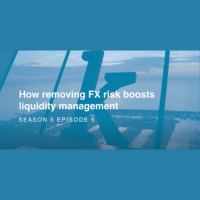 https://treasuryxl.com/wp-content/uploads/2023/08/kantox-200-ep-5.png
200
200
treasuryXL
https://treasuryxl.com/wp-content/uploads/2018/07/treasuryXL-logo-300x56.png
treasuryXL2023-08-18 10:48:512023-08-18 10:48:51How removing FX risk boosts liquidity management
https://treasuryxl.com/wp-content/uploads/2023/08/kantox-200-ep-5.png
200
200
treasuryXL
https://treasuryxl.com/wp-content/uploads/2018/07/treasuryXL-logo-300x56.png
treasuryXL2023-08-18 10:48:512023-08-18 10:48:51How removing FX risk boosts liquidity management https://treasuryxl.com/wp-content/uploads/2023/08/Sabbir-200.png
200
200
treasuryXL
https://treasuryxl.com/wp-content/uploads/2018/07/treasuryXL-logo-300x56.png
treasuryXL2023-08-14 07:00:542023-11-01 10:42:15The Benefits and Challenges of Project Finance
https://treasuryxl.com/wp-content/uploads/2023/08/Sabbir-200.png
200
200
treasuryXL
https://treasuryxl.com/wp-content/uploads/2018/07/treasuryXL-logo-300x56.png
treasuryXL2023-08-14 07:00:542023-11-01 10:42:15The Benefits and Challenges of Project Finance https://treasuryxl.com/wp-content/uploads/2023/08/premium-announcement.png
200
200
treasuryXL
https://treasuryxl.com/wp-content/uploads/2018/07/treasuryXL-logo-300x56.png
treasuryXL2023-08-09 09:00:312023-08-09 09:02:54Driving Innovation in Currency Management: Renewed Partnership with Kantox
https://treasuryxl.com/wp-content/uploads/2023/08/premium-announcement.png
200
200
treasuryXL
https://treasuryxl.com/wp-content/uploads/2018/07/treasuryXL-logo-300x56.png
treasuryXL2023-08-09 09:00:312023-08-09 09:02:54Driving Innovation in Currency Management: Renewed Partnership with Kantox https://treasuryxl.com/wp-content/uploads/2023/08/Francois-training-200.png
200
200
treasuryXL
https://treasuryxl.com/wp-content/uploads/2018/07/treasuryXL-logo-300x56.png
treasuryXL2023-08-09 07:00:432023-08-07 09:57:37New International Treasury Management and Corporate Finance Fundamentals programme starting
https://treasuryxl.com/wp-content/uploads/2023/08/Francois-training-200.png
200
200
treasuryXL
https://treasuryxl.com/wp-content/uploads/2018/07/treasuryXL-logo-300x56.png
treasuryXL2023-08-09 07:00:432023-08-07 09:57:37New International Treasury Management and Corporate Finance Fundamentals programme starting https://treasuryxl.com/wp-content/uploads/2023/08/harry-fx-spot-200-1.png
200
200
treasuryXL
https://treasuryxl.com/wp-content/uploads/2018/07/treasuryXL-logo-300x56.png
treasuryXL2023-08-03 10:50:362024-06-06 15:42:29What is an FX Spot Trade? | By Harry Mills
https://treasuryxl.com/wp-content/uploads/2023/08/harry-fx-spot-200-1.png
200
200
treasuryXL
https://treasuryxl.com/wp-content/uploads/2018/07/treasuryXL-logo-300x56.png
treasuryXL2023-08-03 10:50:362024-06-06 15:42:29What is an FX Spot Trade? | By Harry Mills https://treasuryxl.com/wp-content/uploads/2023/07/Kyriba-200-2e.png
200
200
treasuryXL
https://treasuryxl.com/wp-content/uploads/2018/07/treasuryXL-logo-300x56.png
treasuryXL2023-08-02 07:00:312023-07-25 16:55:50eBook | 5 Steps to Gaining Clearer Cash Visibility
https://treasuryxl.com/wp-content/uploads/2023/07/Kyriba-200-2e.png
200
200
treasuryXL
https://treasuryxl.com/wp-content/uploads/2018/07/treasuryXL-logo-300x56.png
treasuryXL2023-08-02 07:00:312023-07-25 16:55:50eBook | 5 Steps to Gaining Clearer Cash Visibility https://treasuryxl.com/wp-content/uploads/2023/07/Forward-points-200-5.png
200
200
treasuryXL
https://treasuryxl.com/wp-content/uploads/2018/07/treasuryXL-logo-300x56.png
treasuryXL2023-07-13 10:00:162023-07-12 11:58:43Forward Points Optimisation | Pitching forward points optimisation to the C-Suite
https://treasuryxl.com/wp-content/uploads/2023/07/Forward-points-200-5.png
200
200
treasuryXL
https://treasuryxl.com/wp-content/uploads/2018/07/treasuryXL-logo-300x56.png
treasuryXL2023-07-13 10:00:162023-07-12 11:58:43Forward Points Optimisation | Pitching forward points optimisation to the C-Suite https://treasuryxl.com/wp-content/uploads/2023/07/kantox-7-7-200.png
200
200
treasuryXL
https://treasuryxl.com/wp-content/uploads/2018/07/treasuryXL-logo-300x56.png
treasuryXL2023-07-07 10:00:102023-07-06 14:35:43Fine-Tuning Balance Sheet Hedging
https://treasuryxl.com/wp-content/uploads/2023/07/kantox-7-7-200.png
200
200
treasuryXL
https://treasuryxl.com/wp-content/uploads/2018/07/treasuryXL-logo-300x56.png
treasuryXL2023-07-07 10:00:102023-07-06 14:35:43Fine-Tuning Balance Sheet Hedging https://treasuryxl.com/wp-content/uploads/2023/06/CRMMAV-200.png
200
200
treasuryXL
https://treasuryxl.com/wp-content/uploads/2018/07/treasuryXL-logo-300x56.png
treasuryXL2023-07-04 10:00:242023-06-27 14:38:0110th Annual Credit Risk Management, Modelling and Validation
https://treasuryxl.com/wp-content/uploads/2023/06/CRMMAV-200.png
200
200
treasuryXL
https://treasuryxl.com/wp-content/uploads/2018/07/treasuryXL-logo-300x56.png
treasuryXL2023-07-04 10:00:242023-06-27 14:38:0110th Annual Credit Risk Management, Modelling and Validation https://treasuryxl.com/wp-content/uploads/2023/06/Kantox-CurrencyCast-200-3e.png
200
200
treasuryXL
https://treasuryxl.com/wp-content/uploads/2018/07/treasuryXL-logo-300x56.png
treasuryXL2023-06-30 10:00:012023-06-27 09:40:07The Treasurers Guide to Currency Management
https://treasuryxl.com/wp-content/uploads/2023/06/Kantox-CurrencyCast-200-3e.png
200
200
treasuryXL
https://treasuryxl.com/wp-content/uploads/2018/07/treasuryXL-logo-300x56.png
treasuryXL2023-06-30 10:00:012023-06-27 09:40:07The Treasurers Guide to Currency Management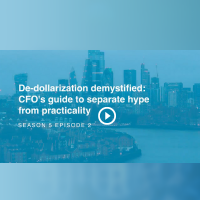 https://treasuryxl.com/wp-content/uploads/2023/06/kantox-200-6e-1.png
200
200
treasuryXL
https://treasuryxl.com/wp-content/uploads/2018/07/treasuryXL-logo-300x56.png
treasuryXL2023-06-06 07:00:472023-06-06 10:45:06De-dollarization demystified: CFO’s guide to separate hype from practicality
https://treasuryxl.com/wp-content/uploads/2023/06/kantox-200-6e-1.png
200
200
treasuryXL
https://treasuryxl.com/wp-content/uploads/2018/07/treasuryXL-logo-300x56.png
treasuryXL2023-06-06 07:00:472023-06-06 10:45:06De-dollarization demystified: CFO’s guide to separate hype from practicality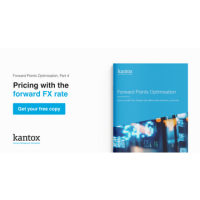 https://treasuryxl.com/wp-content/uploads/2023/05/forward-points-4e-200.png
200
200
treasuryXL
https://treasuryxl.com/wp-content/uploads/2018/07/treasuryXL-logo-300x56.png
treasuryXL2023-05-31 10:00:142023-06-01 15:49:38Forward Points Optimisation | Pricing with the forward FX rate
https://treasuryxl.com/wp-content/uploads/2023/05/forward-points-4e-200.png
200
200
treasuryXL
https://treasuryxl.com/wp-content/uploads/2018/07/treasuryXL-logo-300x56.png
treasuryXL2023-05-31 10:00:142023-06-01 15:49:38Forward Points Optimisation | Pricing with the forward FX rate https://treasuryxl.com/wp-content/uploads/2023/05/kyiba-report-200.png
200
200
treasuryXL
https://treasuryxl.com/wp-content/uploads/2018/07/treasuryXL-logo-300x56.png
treasuryXL2023-05-29 11:00:382023-05-26 13:14:55Kyriba’s Currency Impact Report: Multinational Corporations Quantify FX Impacts Totaling Near Record $32.21 Billion
https://treasuryxl.com/wp-content/uploads/2023/05/kyiba-report-200.png
200
200
treasuryXL
https://treasuryxl.com/wp-content/uploads/2018/07/treasuryXL-logo-300x56.png
treasuryXL2023-05-29 11:00:382023-05-26 13:14:55Kyriba’s Currency Impact Report: Multinational Corporations Quantify FX Impacts Totaling Near Record $32.21 Billion https://treasuryxl.com/wp-content/uploads/2023/05/kantox-currency-cast-200-18e.png
200
200
treasuryXL
https://treasuryxl.com/wp-content/uploads/2018/07/treasuryXL-logo-300x56.png
treasuryXL2023-05-19 10:00:022023-05-19 10:25:00Unlock the potential of automation for better treasury efficiency and accuracy
https://treasuryxl.com/wp-content/uploads/2023/05/kantox-currency-cast-200-18e.png
200
200
treasuryXL
https://treasuryxl.com/wp-content/uploads/2018/07/treasuryXL-logo-300x56.png
treasuryXL2023-05-19 10:00:022023-05-19 10:25:00Unlock the potential of automation for better treasury efficiency and accuracy https://treasuryxl.com/wp-content/uploads/2023/05/kantox-forward-points-200-16e.png
200
200
treasuryXL
https://treasuryxl.com/wp-content/uploads/2018/07/treasuryXL-logo-300x56.png
treasuryXL2023-05-16 07:00:062023-05-12 14:12:17Forward points and currency hedging
https://treasuryxl.com/wp-content/uploads/2023/05/kantox-forward-points-200-16e.png
200
200
treasuryXL
https://treasuryxl.com/wp-content/uploads/2018/07/treasuryXL-logo-300x56.png
treasuryXL2023-05-16 07:00:062023-05-12 14:12:17Forward points and currency hedging https://treasuryxl.com/wp-content/uploads/2023/05/kyriba-11e-200.png
200
200
treasuryXL
https://treasuryxl.com/wp-content/uploads/2018/07/treasuryXL-logo-300x56.png
treasuryXL2023-05-11 07:00:272023-05-12 09:23:37Embedded Finance to Embedded Treasury: Are Corporates Ready for the Transition?
https://treasuryxl.com/wp-content/uploads/2023/05/kyriba-11e-200.png
200
200
treasuryXL
https://treasuryxl.com/wp-content/uploads/2018/07/treasuryXL-logo-300x56.png
treasuryXL2023-05-11 07:00:272023-05-12 09:23:37Embedded Finance to Embedded Treasury: Are Corporates Ready for the Transition? https://treasuryxl.com/wp-content/uploads/2023/05/Money-20-20.png
200
200
treasuryXL
https://treasuryxl.com/wp-content/uploads/2018/07/treasuryXL-logo-300x56.png
treasuryXL2023-05-04 12:22:032023-05-04 12:23:25Money20/20 Europe is back with a bang | Register with discount
https://treasuryxl.com/wp-content/uploads/2023/05/Money-20-20.png
200
200
treasuryXL
https://treasuryxl.com/wp-content/uploads/2018/07/treasuryXL-logo-300x56.png
treasuryXL2023-05-04 12:22:032023-05-04 12:23:25Money20/20 Europe is back with a bang | Register with discount https://treasuryxl.com/wp-content/uploads/2023/05/currency-pegs-200.png
200
200
treasuryXL
https://treasuryxl.com/wp-content/uploads/2018/07/treasuryXL-logo-300x56.png
treasuryXL2023-05-04 07:00:392024-06-06 15:42:59What are: Currency Pegs | By Harry Mills
https://treasuryxl.com/wp-content/uploads/2023/05/currency-pegs-200.png
200
200
treasuryXL
https://treasuryxl.com/wp-content/uploads/2018/07/treasuryXL-logo-300x56.png
treasuryXL2023-05-04 07:00:392024-06-06 15:42:59What are: Currency Pegs | By Harry Mills https://treasuryxl.com/wp-content/uploads/2023/05/Trade-Finance-Trends-Innovations-and-disruptions.png
200
200
treasuryXL
https://treasuryxl.com/wp-content/uploads/2018/07/treasuryXL-logo-300x56.png
treasuryXL2023-05-03 08:25:032023-07-05 09:35:01LIVE SESSION | Trade Finance Trends: Innovations and Disruptions
https://treasuryxl.com/wp-content/uploads/2023/05/Trade-Finance-Trends-Innovations-and-disruptions.png
200
200
treasuryXL
https://treasuryxl.com/wp-content/uploads/2018/07/treasuryXL-logo-300x56.png
treasuryXL2023-05-03 08:25:032023-07-05 09:35:01LIVE SESSION | Trade Finance Trends: Innovations and Disruptions https://treasuryxl.com/wp-content/uploads/2023/04/fp-1-200-.png
200
200
treasuryXL
https://treasuryxl.com/wp-content/uploads/2018/07/treasuryXL-logo-300x56.png
treasuryXL2023-05-02 07:00:172023-04-28 13:08:47Forward Points Optimisation: How to reduce the cost of hedging
https://treasuryxl.com/wp-content/uploads/2023/04/fp-1-200-.png
200
200
treasuryXL
https://treasuryxl.com/wp-content/uploads/2018/07/treasuryXL-logo-300x56.png
treasuryXL2023-05-02 07:00:172023-04-28 13:08:47Forward Points Optimisation: How to reduce the cost of hedging https://treasuryxl.com/wp-content/uploads/2023/03/kantox-e11-200.png
200
200
treasuryXL
https://treasuryxl.com/wp-content/uploads/2018/07/treasuryXL-logo-300x56.png
treasuryXL2023-04-27 10:00:412023-04-26 14:53:49How to effectively deal with over-hedging in currency management
https://treasuryxl.com/wp-content/uploads/2023/03/kantox-e11-200.png
200
200
treasuryXL
https://treasuryxl.com/wp-content/uploads/2018/07/treasuryXL-logo-300x56.png
treasuryXL2023-04-27 10:00:412023-04-26 14:53:49How to effectively deal with over-hedging in currency management https://treasuryxl.com/wp-content/uploads/2023/04/blog-sabbir-200.png
200
200
treasuryXL
https://treasuryxl.com/wp-content/uploads/2018/07/treasuryXL-logo-300x56.png
treasuryXL2023-04-26 07:00:472023-04-26 11:14:29The differences between Senior Secured and Senior Unsecured Debt
https://treasuryxl.com/wp-content/uploads/2023/04/blog-sabbir-200.png
200
200
treasuryXL
https://treasuryxl.com/wp-content/uploads/2018/07/treasuryXL-logo-300x56.png
treasuryXL2023-04-26 07:00:472023-04-26 11:14:29The differences between Senior Secured and Senior Unsecured Debt https://treasuryxl.com/wp-content/uploads/2023/04/fp-1-200-.png
200
200
treasuryXL
https://treasuryxl.com/wp-content/uploads/2018/07/treasuryXL-logo-300x56.png
treasuryXL2023-04-13 07:00:002023-04-17 14:53:57Forward Points Optimisation: A Neglected Issue comes roaring back
https://treasuryxl.com/wp-content/uploads/2023/04/fp-1-200-.png
200
200
treasuryXL
https://treasuryxl.com/wp-content/uploads/2018/07/treasuryXL-logo-300x56.png
treasuryXL2023-04-13 07:00:002023-04-17 14:53:57Forward Points Optimisation: A Neglected Issue comes roaring back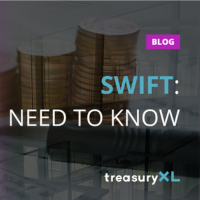 https://treasuryxl.com/wp-content/uploads/2023/04/harry-200.png
200
200
treasuryXL
https://treasuryxl.com/wp-content/uploads/2018/07/treasuryXL-logo-300x56.png
treasuryXL2023-04-12 07:00:552024-06-06 15:39:41SWIFT: Need to Know | By Harry Mills
https://treasuryxl.com/wp-content/uploads/2023/04/harry-200.png
200
200
treasuryXL
https://treasuryxl.com/wp-content/uploads/2018/07/treasuryXL-logo-300x56.png
treasuryXL2023-04-12 07:00:552024-06-06 15:39:41SWIFT: Need to Know | By Harry Mills https://treasuryxl.com/wp-content/uploads/2023/04/Ontwerp-zonder-titel-2.png
200
200
treasuryXL
https://treasuryxl.com/wp-content/uploads/2018/07/treasuryXL-logo-300x56.png
treasuryXL2023-04-10 07:00:022023-04-17 14:52:433 Risks to Make Your CFO Approve Your Treasury Project
https://treasuryxl.com/wp-content/uploads/2023/04/Ontwerp-zonder-titel-2.png
200
200
treasuryXL
https://treasuryxl.com/wp-content/uploads/2018/07/treasuryXL-logo-300x56.png
treasuryXL2023-04-10 07:00:022023-04-17 14:52:433 Risks to Make Your CFO Approve Your Treasury Project https://treasuryxl.com/wp-content/uploads/2023/03/kantox-200-e10-1.png
200
200
treasuryXL
https://treasuryxl.com/wp-content/uploads/2018/07/treasuryXL-logo-300x56.png
treasuryXL2023-03-31 09:36:242023-03-31 10:58:59Effectively managing FX-denominated order cancellations
https://treasuryxl.com/wp-content/uploads/2023/03/kantox-200-e10-1.png
200
200
treasuryXL
https://treasuryxl.com/wp-content/uploads/2018/07/treasuryXL-logo-300x56.png
treasuryXL2023-03-31 09:36:242023-03-31 10:58:59Effectively managing FX-denominated order cancellations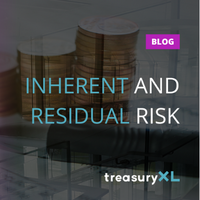 https://treasuryxl.com/wp-content/uploads/2023/03/hary-inherent-risk-200.png
200
200
treasuryXL
https://treasuryxl.com/wp-content/uploads/2018/07/treasuryXL-logo-300x56.png
treasuryXL2023-03-28 07:00:172024-06-06 15:43:27Inherent and Residual Risk | By Harry Mills
https://treasuryxl.com/wp-content/uploads/2023/03/hary-inherent-risk-200.png
200
200
treasuryXL
https://treasuryxl.com/wp-content/uploads/2018/07/treasuryXL-logo-300x56.png
treasuryXL2023-03-28 07:00:172024-06-06 15:43:27Inherent and Residual Risk | By Harry Mills https://treasuryxl.com/wp-content/uploads/2023/03/kantox-200-1.png
200
200
treasuryXL
https://treasuryxl.com/wp-content/uploads/2018/07/treasuryXL-logo-300x56.png
treasuryXL2023-03-24 09:10:232023-03-24 09:12:08How forward points optimisation improves currency management
https://treasuryxl.com/wp-content/uploads/2023/03/kantox-200-1.png
200
200
treasuryXL
https://treasuryxl.com/wp-content/uploads/2018/07/treasuryXL-logo-300x56.png
treasuryXL2023-03-24 09:10:232023-03-24 09:12:08How forward points optimisation improves currency management https://treasuryxl.com/wp-content/uploads/2023/03/Ontwerp-zonder-titel-1.png
200
200
treasuryXL
https://treasuryxl.com/wp-content/uploads/2018/07/treasuryXL-logo-300x56.png
treasuryXL2023-03-16 07:00:232023-03-16 09:03:33Fintech & currency management: navigating complex regulations and innovation
https://treasuryxl.com/wp-content/uploads/2023/03/Ontwerp-zonder-titel-1.png
200
200
treasuryXL
https://treasuryxl.com/wp-content/uploads/2018/07/treasuryXL-logo-300x56.png
treasuryXL2023-03-16 07:00:232023-03-16 09:03:33Fintech & currency management: navigating complex regulations and innovation https://treasuryxl.com/wp-content/uploads/2023/03/kantox-200.png
200
200
treasuryXL
https://treasuryxl.com/wp-content/uploads/2018/07/treasuryXL-logo-300x56.png
treasuryXL2023-03-10 10:23:482023-03-10 10:23:48The dangers of key person risk in currency management
https://treasuryxl.com/wp-content/uploads/2023/03/kantox-200.png
200
200
treasuryXL
https://treasuryxl.com/wp-content/uploads/2018/07/treasuryXL-logo-300x56.png
treasuryXL2023-03-10 10:23:482023-03-10 10:23:48The dangers of key person risk in currency management https://treasuryxl.com/wp-content/uploads/2023/03/kantox-3-maart-200.png
200
200
treasuryXL
https://treasuryxl.com/wp-content/uploads/2018/07/treasuryXL-logo-300x56.png
treasuryXL2023-03-03 11:59:102023-03-03 11:59:10Hedging Intercompany Loans: A New Way to Mitigate FX Risk
https://treasuryxl.com/wp-content/uploads/2023/03/kantox-3-maart-200.png
200
200
treasuryXL
https://treasuryxl.com/wp-content/uploads/2018/07/treasuryXL-logo-300x56.png
treasuryXL2023-03-03 11:59:102023-03-03 11:59:10Hedging Intercompany Loans: A New Way to Mitigate FX Risk https://treasuryxl.com/wp-content/uploads/2023/02/currencycast-28e-200.png
200
200
treasuryXL
https://treasuryxl.com/wp-content/uploads/2018/07/treasuryXL-logo-300x56.png
treasuryXL2023-02-28 07:00:052023-02-27 09:10:02Mitigating Behavioural Biases in Currency Management
https://treasuryxl.com/wp-content/uploads/2023/02/currencycast-28e-200.png
200
200
treasuryXL
https://treasuryxl.com/wp-content/uploads/2018/07/treasuryXL-logo-300x56.png
treasuryXL2023-02-28 07:00:052023-02-27 09:10:02Mitigating Behavioural Biases in Currency Management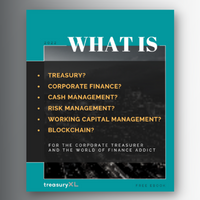 https://treasuryxl.com/wp-content/uploads/2022/05/eBook-gray.png
200
200
treasuryXL
https://treasuryxl.com/wp-content/uploads/2018/07/treasuryXL-logo-300x56.png
treasuryXL2023-02-23 08:00:492023-02-21 14:21:19Unlock Your Treasury Expertise Today – Download Our Free eBook!
https://treasuryxl.com/wp-content/uploads/2022/05/eBook-gray.png
200
200
treasuryXL
https://treasuryxl.com/wp-content/uploads/2018/07/treasuryXL-logo-300x56.png
treasuryXL2023-02-23 08:00:492023-02-21 14:21:19Unlock Your Treasury Expertise Today – Download Our Free eBook!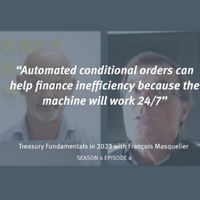 https://treasuryxl.com/wp-content/uploads/2023/02/kantox-200-17e.png
200
200
treasuryXL
https://treasuryxl.com/wp-content/uploads/2018/07/treasuryXL-logo-300x56.png
treasuryXL2023-02-17 13:50:092023-03-03 12:05:34Treasury fundamentals in 2023
https://treasuryxl.com/wp-content/uploads/2023/02/kantox-200-17e.png
200
200
treasuryXL
https://treasuryxl.com/wp-content/uploads/2018/07/treasuryXL-logo-300x56.png
treasuryXL2023-02-17 13:50:092023-03-03 12:05:34Treasury fundamentals in 2023 https://treasuryxl.com/wp-content/uploads/2023/02/unlock-200x200-1.png
200
200
treasuryXL
https://treasuryxl.com/wp-content/uploads/2018/07/treasuryXL-logo-300x56.png
treasuryXL2023-02-14 07:00:082023-04-06 09:55:32LIVE SESSION | Unlock the Benefits of Interim Treasury Management
https://treasuryxl.com/wp-content/uploads/2023/02/unlock-200x200-1.png
200
200
treasuryXL
https://treasuryxl.com/wp-content/uploads/2018/07/treasuryXL-logo-300x56.png
treasuryXL2023-02-14 07:00:082023-04-06 09:55:32LIVE SESSION | Unlock the Benefits of Interim Treasury Management https://treasuryxl.com/wp-content/uploads/2023/01/ep-3-kantox-200.png
200
200
treasuryXL
https://treasuryxl.com/wp-content/uploads/2018/07/treasuryXL-logo-300x56.png
treasuryXL2023-02-09 07:00:222023-03-03 12:06:25How to mitigate credit risk
https://treasuryxl.com/wp-content/uploads/2023/01/ep-3-kantox-200.png
200
200
treasuryXL
https://treasuryxl.com/wp-content/uploads/2018/07/treasuryXL-logo-300x56.png
treasuryXL2023-02-09 07:00:222023-03-03 12:06:25How to mitigate credit risk https://treasuryxl.com/wp-content/uploads/2023/02/eurofinance-200.png
200
200
treasuryXL
https://treasuryxl.com/wp-content/uploads/2018/07/treasuryXL-logo-300x56.png
treasuryXL2023-02-07 07:00:202023-02-06 10:33:56Effective Finance & Treasury in Africa | Eurofinance
https://treasuryxl.com/wp-content/uploads/2023/02/eurofinance-200.png
200
200
treasuryXL
https://treasuryxl.com/wp-content/uploads/2018/07/treasuryXL-logo-300x56.png
treasuryXL2023-02-07 07:00:202023-02-06 10:33:56Effective Finance & Treasury in Africa | EurofinanceRisk Management topics
New: treasuryXL MatchMaker
Disclaimer: This chatbot is in beta; occasional errors might occur. It doesn’t give financial advice, but it will do its best to connect you with the right treasuryXL expert or partner.
Not displaying right? Click here to open treasuryXL MatchMaker in a full page.
Newsletter & eBook
Subscribe to our free weekly newsletter and receive your 41 pages ‘easy-to-read’ eBook, What is Treasury?
Great news! treasuryXL’s live session recordings are now available on Spotify

Go to
Partner Program
Contact us
treasuryXL
Kaldenkerkerweg 22
5913 AE Venlo
The Netherlands
Email: info @[email protected]
Telephone & WhatsApp: +31 6 2732 8942
Subscribe
Newsletter & eBook
Subscribe to our free weekly newsletter and receive your 41 pages ‘easy-to-read’ eBook, What is Treasury?



